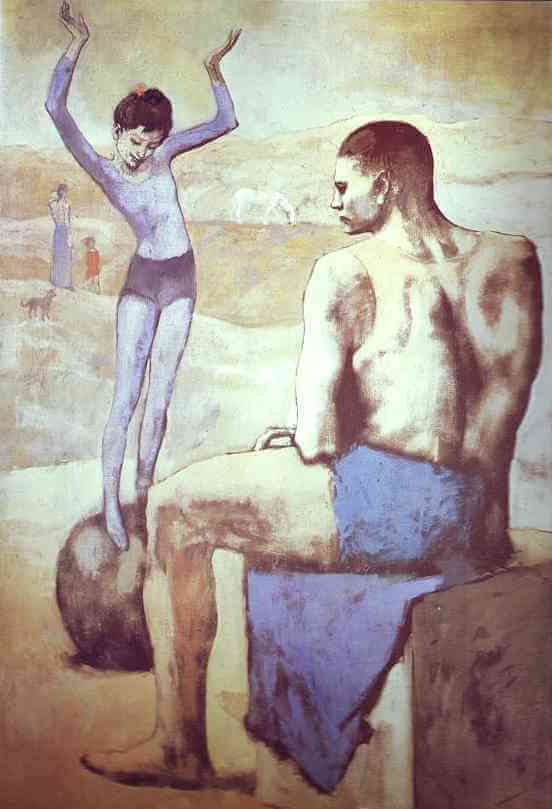Young Acrobat on a Ball, 1905 by Pablo Picasso
The year 1905 saw the final collapse of the blue pallet in I Picasso's work, as greys and then warm reds were gradually allowed to seep back into the range during the year. His repertoire of thin, gaunt female figures is joined by a troupe of other circus personalities. Fun and optimism, instead of melancholia and social alienation, return as subject matter, though depictions of entertainment are still moderated by the inherent social out-casting of the circus community.
In this painting, the pinky tones of the Rose Period are apparent, though the chilling grey of the acrobat's bodysuit strangely arrests the young girl's fluid animation. Her lithe, rounded motions, echoing the shape of the ball, are in obvious opposition with the square muscular form of the man, whose shape is interrelated with the solid, cubed seat. Like the Mother and Child (Maternity) (1901), the strong, upward, angular lines are crossed by a series of horizontal blocks, but in this instance they are allowed to undulate to create a further flowing movement that compliments the rolling force of the girl standing on the ball. The whole picture is a study of stasis versus movement, reflecting an interesting evolution in Picasso's own aesthetic advancement as he moves into this new period.





















